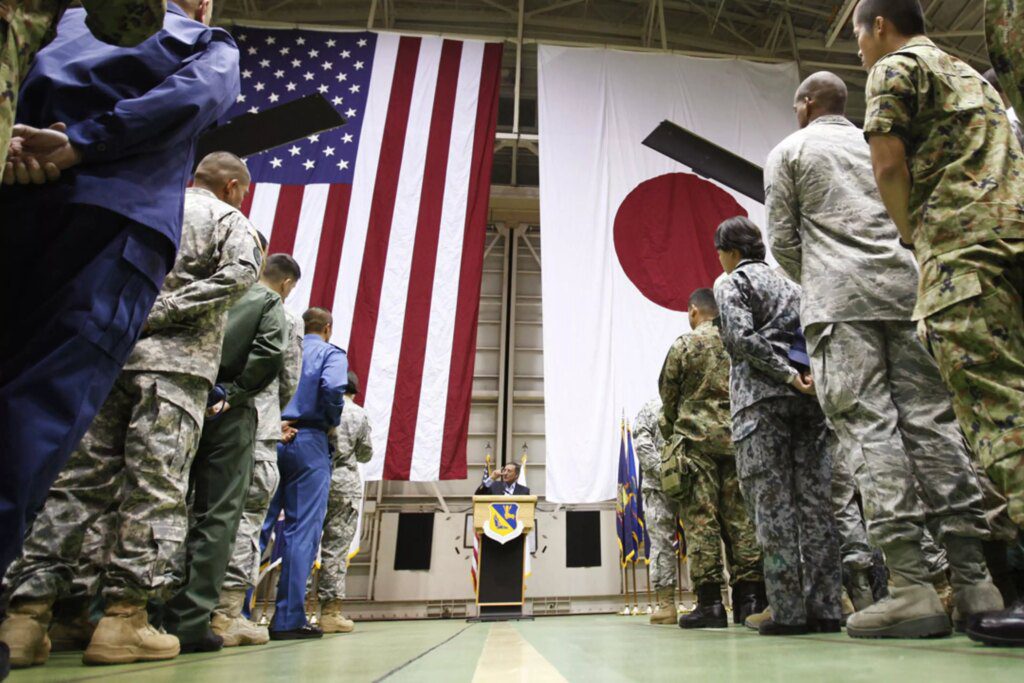This content discusses the evolution of military alliances and its implications for defense policy. It begins by highlighting the importance of alliances in shaping international defense policies throughout history and how they have adapted to changing geopolitical landscapes, technological advances, and emerging threats. The article then explores the origins of military alliances, including examples from ancient times and medieval Europe. It goes on to discuss the post-World War II alliances, such as NATO and the Warsaw Pact, and their roles in the Cold War. The content also addresses the post-Cold War landscape and the emergence of new alliances, as well as the rise of regional alliances in Southeast Asia, the Middle East, and Africa. It concludes by highlighting the implications of evolving alliances for defense policy, including the need to address non-traditional threats, navigate global power dynamics, and balance collective security with national sovereignty. Overall, the article emphasizes the importance of understanding and adapting to the evolution of military alliances in order to effectively address security challenges and safeguard national interests.
The Evolution of Military Alliances: Implications for Defense Policy
Introduction
Military alliances have played a significant role in shaping international defense policies throughout history. These alliances have evolved over time, adapting to changing geopolitical landscapes, technological advances, and emerging threats. Understanding the implications of these changes is crucial for nations to develop effective defense policies. This article aims to explore the evolution of military alliances and its implications for defense policy.
The Origins of Military Alliances
Throughout history, nations have formed alliances to enhance security, deter aggressors, and maintain territorial integrity. The concept of alliances dates back to ancient times, where city-states and empires sought to consolidate power and protect their interests through military cooperation. Examples include the Delian League formed after the Greco-Persian Wars and the numerous alliances among medieval European kingdoms.
Post-World War II Alliances
The end of World War II marked a paradigm shift in the formation of military alliances. The emergence of global superpowers, the United States and the Soviet Union, fueled a bipolar world order characterized by the formation of two primary alliance systems: the North Atlantic Treaty Organization (NATO) and the Warsaw Pact.
NATO, formed in 1949, aimed to counterbalance Soviet influence and guarantee the collective defense of its member states. The alliance played a crucial role during the Cold War, acting as a deterrent against potential aggression from the Warsaw Pact countries. NATO evolved over time, expanding its membership to include former Warsaw Pact states after the collapse of the Soviet Union.
The Warsaw Pact, established in 1955, served as a military alliance among the Soviet Union and its satellite states in Eastern Europe. Its primary purpose was to provide collective defense against NATO forces and maintain Soviet influence in the region. The Warsaw Pact disbanded in 1991 due to the collapse of the Soviet Union.
The Post-Cold War Landscape
The end of the Cold War led to a significant shift in the global geopolitical landscape and the reconfiguration of military alliances. With the dissolution of the Warsaw Pact, NATO faced the challenge of defining its new role and purpose. It expanded its focus beyond collective defense to include crisis management, peacekeeping operations, and counterterrorism efforts.
The collapse of the Soviet Union also resulted in the emergence of new independent nations in Eastern Europe and Central Asia. These newly formed states faced security challenges and sought to align themselves with existing alliances or forge new partnerships. Many former Warsaw Pact members joined NATO, leading to an eastward expansion of the alliance.
Rise of Regional Alliances
In addition to global alliances like NATO, the late 20th and early 21st centuries witnessed the rise of regional military alliances. Regions like Southeast Asia, the Middle East, and Africa established alliances to address specific regional security threats and challenges.
One example is the Association of Southeast Asian Nations (ASEAN) which formed the ASEAN Regional Forum (ARF) to facilitate dialogue on regional security issues. Similarly, the Gulf Cooperation Council (GCC) serves as a defense alliance among countries in the Arabian Peninsula to enhance collective security and deter external threats.
Implications for Defense Policy
The evolution of military alliances poses several implications for defense policy. Firstly, defense policies must adapt to new security challenges in an increasingly interconnected world. Alliances need to address non-traditional threats like cyber warfare, terrorism, and hybrid warfare, requiring cooperation and information sharing between member states.
Secondly, defense policy must navigate the complexities of global power dynamics. The rise of emerging powers like China and India adds new dimensions to alliance relationships and requires the balancing of interests among competing nations. Defense policies should focus on fostering strategic partnerships and addressing potential vulnerabilities.
Lastly, defense policy needs to balance the collective security provided by alliances with national sovereignty and autonomy. While alliances enhance security through collective defense, they can also limit independent decision-making. Nations must carefully navigate these dual priorities to ensure their defense policies align with their interests and values.
Conclusion
The evolution of military alliances has transformed defense policy in an ever-changing global landscape. From ancient city-states to the modern era, alliances have served as essential tools for enhancing security, deterring aggression, and maintaining peace. Understanding the implications of evolving alliances is crucial for nations to remain proactive in addressing emerging threats, fostering cooperation, and safeguarding their interests.
